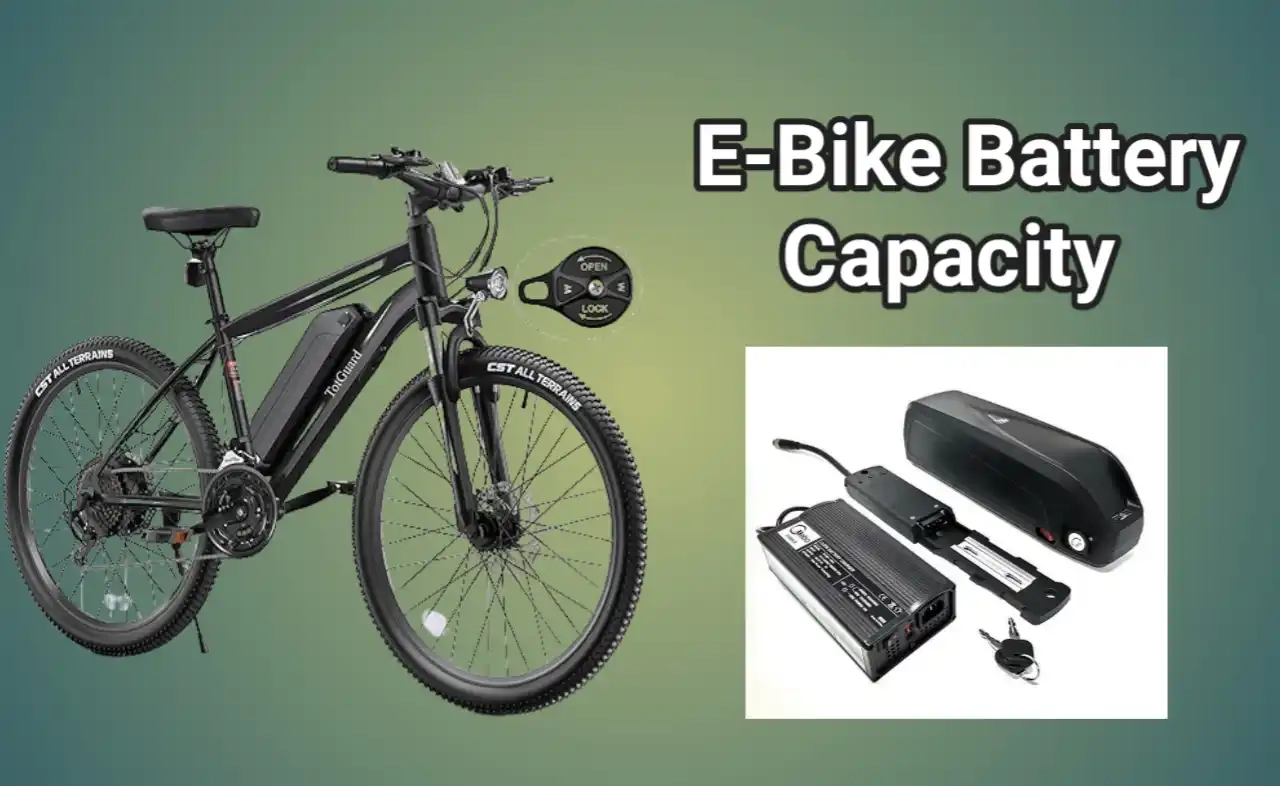E-Bike Battery Capacity
E-bikes have converted the way we navigate our surroundings, offering an eco-friendly volition to traditional transportation. Still, like all electronic biases, the effectiveness and life depend significantly on their E-Bike battery capacity. Read:Electric Bike Controller
Table of Contents
So, how do you assess the health and performance of your e-bike battery? Let’s claw into the complications of e-bike battery capacity testing.
The Significance of Assessing
Imagine embarking on a scenic e-bike adventure only to be stranded inside due to a depleted battery. Assessing your electric bike battery capacity is not just about convenience; it’s a pivotal safety and performance standard that ensures you maximize your riding experience.
Basics of E-Bike Battery Components

- Battery Cells:E-bike batteries comprise multiple cells that store energy. Understanding these cells’ capacity and configuration is vital for accurate testing.
- Voltage and Ampere Rating:The voltage and ampere standing give perceptivity into the battery’s power affair, impacting its overall capacity and performance.
Pointers of a Demeaning E-Bike Battery
Relating early signs of battery declination can save you from unanticipated dislocations and expensive reserves. Read:E-Bike vs Electric Cycle and Electric Motorcycles
Common Warning Signs:
- Reduced Avail:A conspicuous decline in your e-bike’s avail is a red flag signaling implicit battery capacity issues.
- Inconsistent Performance:Still, it may indicate shifting battery capacity situations, If your e-bike exhibits erratic performance patterns.
- Extended Charging Times:Dragged charging durations frequently signify reduced battery effectiveness and capacity.
Essential Tools for Testing E-Bike Battery Capacity
Before diving into the testing process, equip yourself with the necessary tools to ensure accurate and dependable results.
Multimeter:A multimeter serves as a necessary tool, easing voltage and resistance measures essential for assessing electric bike battery capacity.
Step- by- Step companion to Test Battery Capacity
Embark on a methodical trip to assess your electric bike battery capacity, icing optimal performance and life.
- Primary Medications:Ensure your e-bike is powered off and dissociated from any charging sources to initiate a safe and effective testing process.
- Physical Examination of the Battery:Conduct a thorough visual examination, examining the battery for signs of wear and tear, damage, or leakage that may compromise its capacity.
Conducting the Capacity Test
Using a multimeter, measure the battery’s voltage and resistance situations under varying cargo conditions to determine its capacity. Raed: E-bike Accessories
Interpreting the Test Results:Dissect the test results, comparing them against the manufacturer’s specifications to ascertain your e-bike battery’s health and capacity.
Visionary Measures for E-Bike Battery Conservation
Espousing visionary conservation strategies can significantly enhance your e-bike battery’s lifetime and performance.
- Charging Stylish Practices:Follow recommended charging protocols, avoiding over charging or deep discharging to save your e-bike battery’s capacity and effectiveness.
- Storehouse Recommendations: Store your e-bike battery in a cool, dry terrain, icing it remains free from humidity and extreme temperatures that may degrade its capacity over time.
Conclusion
Testing your electric bike battery capacity is a visionary approach to securing your riding experience and maximizing battery life. By understanding the complications of battery factors, feting warning signs, and espousing active conservation practices, you can enjoy innumerous exhilarating e-bike adventures. Read:E-Bike Safety Tips
FAQs
Q Why is testing e-bike battery capacity essential?
Assessing electric bike battery capacity ensures optimal performance, safety, and life, enhancing your riding experience.
Q What are the common pointers of a demeaning e-bike battery?
Reduced avail, inconsistent performance, and extended charging times are current warning signs of battery capacity issues.
Q Which tools are essential for testing electric bike battery capacity?
A multimeter is necessary, easing voltage and resistance measures critical for accurate capacity evaluation.
Q How can I protect my e-bike battery lifetime?
Rspousing charging stylish practices, avoiding extreme temperatures, and following storehouse recommendations can significantly enhance your e-bike battery’s life.
Q Where can I find covers for e-bike battery conservation and reserves?
Consult your e-bike manufacturer’s guidelines, original retailers, or certified technicians for expert advice, services, and genuine relief corridor.
